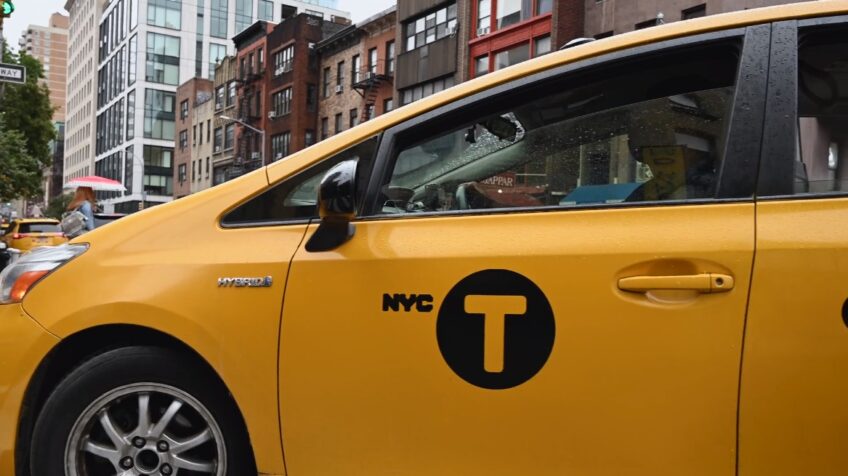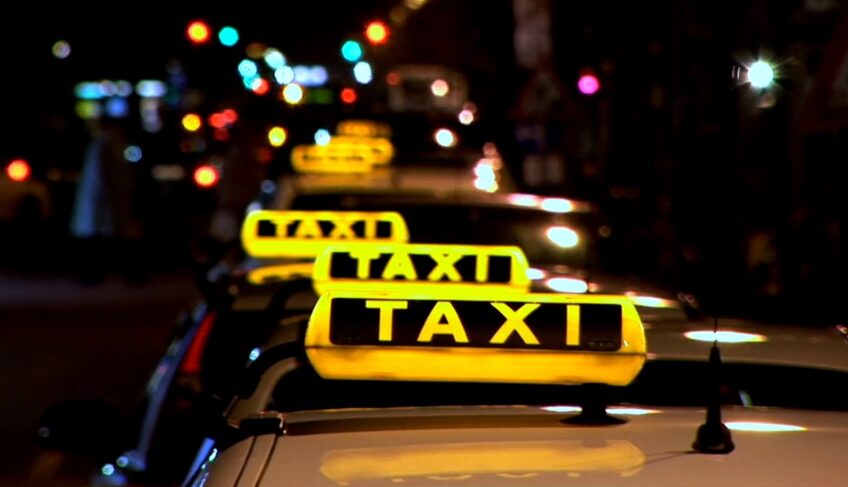Taxi drivers provide an important transportation service to many people, but the amount they make depends on where they live. On average, taxi drivers in the United States earn a salary of $31,800 per year. The range for their earnings varies widely based on location and other factors such as experience and customer ratings.
In some areas of the US, drivers can make as little as $20,500 per year or up to $46,000 annual salary. It also depends on what type of vehicle they drive – large cities tend to have more demand for cabs and thus offer more attractive salaries than more rural areas. Driver pay schemes are also different – some cities use a flat rate system while others use zones or a combination of both.
The cost of riding in a taxi is also determined differently in each area – often with an initial fee followed by a per-mile rate or hourly rate charge for longer trips. For example, most rides within New York City have an initial fee of $3 followed by 50 cents for every one-fifth mile or 70 cents for every minute that the taxi travels over 6 miles per hour. Other cities may have their own unique pricing schemes so it’s best to ask before you take the cab ride if there are any special fares or promotions that could affect your cost.
Factors That Affect Taxi Driver Wages
They can make a decent living depending on the region they are driving in. Their salary is affected by many different factors, such as the cost of living in the area, the availability of jobs, and the type of taxi company they work for.
Let’s delve into the details of what affects their wages and how you can make the most out of your job as a taxi driver.
Location

Location is a key factor that affects the wages of taxi drivers. Ones in larger cities and metropolitan areas typically earn a higher hourly wage than taxi drivers in small or rural towns due to the overall demand for rides and larger customer base. In large cities, there are more people taking taxis, which translates into longer shifts and higher wages per hour; while drivers in smaller towns might have to drive more miles in order to reach the same level of income as those who operate in major metropolitan areas.
They may also command higher wages depending on the specific area that they operate in within a city. For example, downtown areas with popular tourist attractions often have a higher demand for taxis and therefore offer taxi drivers significantly higher hourly rates compared to more residential neighborhoods that don’t generate as much traffic from visitors. Rates may also depend on the availability of alternative transportation options such as public transportation or ride-sharing services. If these services are readily available, customers may be more likely to opt for them over taking a taxi—undermining the potential earnings that taxi drivers can make in certain areas.
Experience
Experience is one of the primary factors affecting how much they earn. Generally, the more experience a driver has, the more they can charge for their services due to the greater amount of knowledge and skills they possess. They are more likely to know the best routes in various parts of town, be better at customer service and be able to handle any possible scenarios that may arise while on the job.
Having a clean driving record also plays a role in determining income levels as many clients can take comfort from knowing that their driver is experienced yet responsible on the road. Additionally, experienced ones are also more likely to successfully pass commercial insurance tests which allow them to work for bigger firms. All these advantages combined add up to potential higher earnings for experienced taxi drivers versus newcomers.
Hours Worked

Hours Worked are an important factor in determining how much they earn in the US. Longer hours are generally associated with higher earnings because drivers have a greater chance of acquiring more customers and earning more money.
The median weekly salary of a taxi driver in the US was reported to be $582 per week as of Aug 2020. That figure was calculated using data from the Bureau of Labor Statistics that estimated the mean yearly pay for taxi and limousine drivers to be around $31,973. However, many factors like location and hours worked can impact how much a driver earns in both favorable and unfavorable ways.
Hours worked can change significantly depending on region or city. Taxi drivers working in cities like New York City or Los Angeles (which contain some of the most densely populated urban centers) often get fares throughout their shifts and are able to work long hours despite heavy traffic due to their large market size. In contrast, taxi cab drivers who are located in rural or suburban areas may experience less ridership due to decreased population density making it difficult for them to make consistent wages without working extended hours.
Working too many hours, however, can also have its drawbacks; resulting in fatigue that reduces efficiency and decreases safety when driving late at night or excessively long shifts during regular workdays/rush hour periods when other motorists on the road present an increased risk due to their own lack of sleepiness. Ultimately, finding some balance between having enough work (so you can make enough money) and not overworking yourself is key for any taxi driver looking to make a steady income while still taking care of themselves physically and mentally health-wise.
Type of Taxi Service

The type of service you work for is an important factor in determining how much you will be able to earn as a taxi driver. There are typically two types of services: one run through an app or online platform and traditional taxi services.
For those who work through an app or online platform, all transactions are made online, meaning you typically find customers this way. There is less need for cash payments, but the wages tend to depend on the number of tips from customers and fares from trips rather than hourly wages. The major apps and platforms that provide these services include Uber, Lyft, and Gett. Drivers for these companies usually earn about minimum wage per hour plus tips when calculated before expenses like wear and tear fuel costs, and other operating expenses are factored in.
Traditional taxi services offer a more hands-on approach to customer service than newer services do. Typically chartered through local governments or individual businesses, traditional taxicabs often have more stringent restrictions than their online counterparts; they may require drivers to have a specific amount of experience before they can start their employment with them. Wage requirements are typically higher than those of online variations with some companies requiring a flat fee combined with tips to be paid after each shift or even hourly wages along with variable incentives depending on performance metrics like customer feedback scores or customer satisfaction ratings. All these factors should be considered when calculating expected earnings while working as part of a traditional taxi service provider.
Read also: How to Become a Licensed Taxi Driver
Working conditions for taxi drivers

On average, they work 40-60 hours per week, with peak demand for rides typically occurring during rush hour or late at night. During these peak periods, drivers can earn more money due to the higher demand for rides. However, working long hours can be physically and mentally exhausting, especially if drivers do not have adequate breaks and time to rest.
In addition to long hours, they are responsible for their own gas and maintenance expenses, including vehicle repairs and maintenance. This can add to the financial burden of the job and make it difficult for drivers to earn a living wage. Some of these companies may offer benefits such as health insurance and retirement plans, but this can vary depending on the company and location.
Another challenge for them is competition from ride-sharing services such as Uber and Lyft. These services have disrupted the industry and have created increased competition for fares. As a result, they may have to work longer hours or offer competitive rates to attract customers.
The physical demands of the job can also take a toll on taxi drivers. Sitting for long periods of time and dealing with traffic can lead to back pain, neck pain, and other health issues. Additionally, taxi drivers may be at risk for violence and harassment from passengers, which can also impact their overall well-being.
Average Taxi Driver Wages

They have an important role in transportation. They provide a crucial service in getting people from point A to point B. But how much do taxi drivers make? To answer that, let’s first look at their average wages in the United States.
This section will cover the average taxi driver’s wages and what factors can influence this rate.
National Average
The national average wage for a taxi driver in the United States is around $31,877. This figure was determined by data collected from the Bureau of Labor Statistics regarding taxi driver wages across the nation.
This figure is largely influenced by the cost of living and wages in a given area, as well as any local regulations or legislation which may affect how much taxi drivers can earn. For example, large cities such as New York or San Francisco may pay higher wages than smaller cities due to higher costs of living or labor regulations. On the other hand, some states have stricter regulations around driver pay that require employers to pay a certain portion of their fees directly to drivers. In many cases, this can lead to higher wages for taxi drivers compared to other states without these types of laws or regulations.
It should also be noted that this number does not take into account factors such as tips and other supplementary income which many taxi drivers may receive throughout the year. As such, it’s important to consider all these factors when evaluating a potential career as a taxi driver.
FAQs
What factors can affect a taxi driver’s earnings?
Factors that can affect their earnings include location, demand for rides, time of day, and competition from ride-sharing services.
Do taxi drivers have to pay for their own gas and maintenance expenses?
Yes, they are typically responsible for their own gas and maintenance expenses, including vehicle repairs and maintenance.
Can taxi drivers work for multiple companies?
Yes, they can work for multiple companies, but they may need to adhere to specific guidelines and regulations for each company.
Are there any opportunities for career advancement as a taxi driver?
Some of them may have the opportunity to advance to managerial positions or start their own companies.
Are there any differences in earnings for taxi drivers in different cities or states?
Yes, their earnings can vary depending on location, with some cities or states having higher demand and higher rates for fares.
Are there any age restrictions for becoming a taxi driver?
Yes, there may be age restrictions for becoming one, with some cities or states requiring drivers to be at least 21 years old.
Is there a high turnover rate for taxi drivers?
The turnover rate for them can be high due to the demanding nature of the job and competition from ride-sharing services.
Can taxi drivers earn more money by working longer hours or on weekends?
They can earn more money by working longer hours or during peak demand periods, such as weekends or holidays. However, this can also depend on factors such as location and competition from other drivers.
Conclusion
In conclusion, the income of a taxi driver in the US varies greatly depending on the city. Every taxi driver will earn more in a city with a high rate of travel and tourism such as New York City or Los Angeles. Work hours, commission, and tips also play a role in how much money is earned. In general, taxi drivers make an average of $18 per hour before expenses, while some make more than $20 per hour after expenses.
No matter what city they work in, every taxi driver should strive to provide good customer service in order to maximize their income.

